Decolonising Introductory Physics
TLDR for students: Research a scientist who doesn't look like Isaac Newton, fill out the form, email me the results [email protected], and your scientist will appear in the textbook links below!
TLDR for teachers: Check out the textbook below. It's organized by chapter and section. Find a scientist relevant to your class. Click on the "Download Slide" link and get a powerpoint slide with the scientist's picture(s) and description (descriptions in the Notes section of the PPTX slide)!
People have written more eloquently than I can about this (e.g Chanda Prescod-Weinstein's Decolonising Science Reading List and her followup articles including Making Meaning of "Decolonising"). It is certainly true, for instance, that working through a common syllabus with a standard textbook will have intro students looking at a progression of Physicists all of whom look like Newton.
As a teacher, I thought "oh, I'll just grab someone else's annotated syllabus so that I can consistently augment my own class with a more inclusive (note: now I might say 'decolonised' .. but I'm not sure I'm quite sophisticated enough in my language) set of models." I poked around the internet, but couldn't find such a syllabus. So, as part of my intro class, one of the assignments is essentially "find an example of a Physicist who doesn't look like Newton, write something about that person, include a picture if you can, and figure out where that person could have been included in our syllabus." The assignment gets the full weight of any other weekly assignment. I'm putting this on github (1) so that it can be a resource for others (ideally, you'd be able to say "oh, I'm covering Knight Chapter 3, Section 2 today ... here's a quick PPT slide I can slip in with my clicker questions") (2) so that people can send in PRs to make this better.
Some details:
In order to make contributions easy, information about each scientist lives in a different file. It's a simple text file, and I've set up a page that can make one for you here. Check it out!
If you like, you can also make a file directly yourself. Here is an Example File.
-
Add as much of the information as you can, but please feel encouraged to send me incomplete files if that's what you have! Something is way better than nothing!
-
Try to follow the format as well as you can (filling in the boxes on the form makes this really easy!). If you send me files (either via email [email protected] or as a PR), I'll gladly reformat them to fix any small mistakes, so don't let that stop you!
-
Please cite your sources (Wikipedia is OK!), and feel free to quote explicitly, but don't plagiarize!
-
Including links to pictures really helps!
I have used two versions of the assignment. First, when I'm trying to generate new content:
The content of this particular course (and this particular textbook) has pretty much focused on ideas developed by white, European men. In fact, working through a common syllabus with a standard textbook will have you looking at a progression of Physicists all of whom (to within rounding error) look like Newton. I'd like to say that's a historical accident, but it's actually more complicated than that, and perhaps not always so benign as the word "accident" might imply.
Your task in this assignment is to broaden this focus by writing a paragraph or so about someone who's made a significant contribution to Physics and who is not a white, European male. This can be a contemporary or a historical figure. Try to find someone you don't already know about - or perhaps someone you do know about but think should be better known. Your paragraphs should include telling us who the person is, the contribution(s), the significance of the contribution(s), something about that person's life and how it impacted that person's experience that led to his or her discoveries. Next, looking through the table of contents and/or index of your textbook, tell us where the person's contributions might be placed in this textbook (the textbook covers a very large amount of Physics, so you may be able to answer this part even if we won't cover the relevant contributions this semester). Finally, if at all possible, please include a link to a picture of the person.
It would be great if everyone found a different scientist to describe, so if you know whom someone else is choosing to write about, please choose someone else.
Our intention is to make the results of this assignment public, so please submit your assignment in the format described by the example file located at https://goo.gl/AkT97E and please note that it's really easy to create your own file by using the form. Since we plan to make this public, please be sure either to include your name if you'd like your name included in the text, or to leave it out if you don't want it included. Please remember to cite your sources.
This year, I'm switching textbooks, and have a slightly different assignment:
The content of this particular course (and this particular textbook) has pretty much focused on ideas developed by white, European men. In fact, working through a common syllabus with a standard textbook will have you looking at a progression of Physicists all of whom (to within rounding error) look like Newton. I'd like to say that's a historical accident, but it's actually more complicated than that, and perhaps not always so benign as the word "accident" might imply.
Your first task in this assignment is to broaden this focus by writing a paragraph or so about someone who's made a significant contribution to Physics and who is not a white, European male, and to place that paragraph in our current textbook. You can choose a contemporary or a historical figure. Try to find someone you don't already know about - or perhaps someone you do know about but think should be better known. Your paragraphs should include telling us who the person is, the contribution(s), the significance of the contribution(s), something about that person's life and how it impacted that person's experience that led to his or her discoveries. NOTE: as discussed in class, the main focus this year is figuring out which scientists to place into our current textbook (Matter and Interactions), and where to place them. Thus, you're strongly encouraged to take information either from the current collection of scientists on github, or from David Rosengrant's collection of STEM Heroes. Please choose one of those, check it for plagiarism, and continue with the assignment.
Next, looking through the table of contents and/or index of your textbook, tell us where the person's contributions might be placed in this textbook (the textbook covers a very large amount of Physics, so you may be able to answer this part even if we won't cover the relevant contributions this semester). Find an online picture of the person, and record a link to that picture.
Once you have all of that information, type it into the online form, and enter the resulting information into the assignment on Moodle.
TLDR: Choose one that's already done, check it for plagiarism, find at least one new image or fact, place it in the new textbook. For extra credit, do a second new scientist. Use MLA.
Here's the current version, which obviously needs more scientists added:
CLICK on the "Download Slide" link by each scientist for a powerpoint slide, or download the whole slide deck for Knight, 3rd edition (calc-based) here !!! Notes for each scientist are in the Notes section of the PPTX slide.
| Photo | Name | Description | Sources | Contributor | Contributors | |||
|---|---|---|---|---|---|---|---|---|
| Chapter | Section | Topics | ||||||
| 1 | Motion, Velocity, Acceleration | |||||||
| 2 | 1D Kinematics | |||||||
| 3 | Vectors | |||||||
| 4 | 2D kinematics | |||||||
| 5 | Force and Motion, Newton's 1st and 2nd laws | |||||||
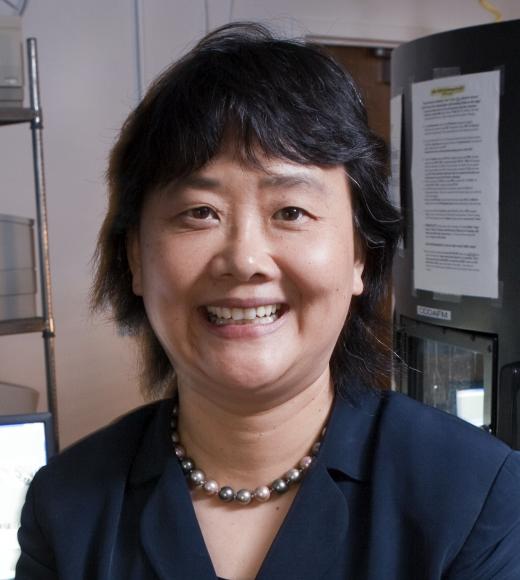 Download Slide Download Slide |
Gang-yu Liu | Gang-yu Liu is a chemist and professor at the UC Davis. She graduated from Beijing University and received her M.A. and Ph.D. degree from Princeton University by 1992. Her research is focused on development of nanotechnology and potential applications to bioanalytical chemistry ("Gang-yu Liu", 2017). To investigate the cancer cell signaling and allergy, she has used high resolution images taken by AFM (Atomic Force Microscopy) and published papers about her research on nanostructures of ligands and receptors.Through her research using AFM, the method for nanografting for determining the orientation and packing of biomolecules on surfaces has been developed significantly. Also, her research on nanotechnology and bioanalytical chemistry has been expected to have a potential for medical and biological applications ranging from medicines to fundamental studies of molecular biology. Based on her fabulous work on nanolithographic methods, she got several awards including Career Development Chair Award, Wayne State University (2000-2001), Outstanding Scholarly Achievement Award, Wayne State University (2000), NSF CAREER Award (1997-2001), Arnold and Mabel Beckman Young Investigator Award (1996-1998), and Camille and Henry Dreyfus New Faculty Award (1994-1999). | Gang-yu Liu. (2017, Oct 5). Retrieved from Link Nanografting for Surface Physical Chemistry. (2017, Nov 19). Retrieved from Link | |||||
| 6 | 6 |  Download Slide Download Slide |
Ronald McNair | McNair was an American physicist and an astronaut for NASA. He only lived until the age of 36, for he died during the launch of the Space Shuttle Challenger in 1986. He received his bachelors from North Carolina A & T State, and received doctorates from MIT, NC A&T State, Morris College and Univ. or South Carolina. McNair was a 5th degree black belt in karate and a performing Jazz saxophonist. | Biographical Data of Ronald E. McNair. (2003, December). Retrieved February 20, 2018, from Link | |||
| Equilibrium, Mass, Weight, Gravity, Friction, Drag, motion along a line | ||||||||
| 7 | Newton's third law | |||||||
| 8 | Dynamics in a plane | |||||||
| 9 | Impulse and momentum | |||||||
 Download Slide Download Slide |
Emmy Noether | Amalie Emmy Noether was a German mathematician and physicist known for her landmark contributions to abstract algebra and theoretical physics. One of her most remarkable discoveries in physics was Noether's theorem. The theorem states that every differentiable symmetry of the action of a physical system has a corresponding conservation law. In 1915, Noether was helping two other scientists, David Hilbert and Felix Klein, to understand Albert Einstein's general relativity theory when she proved Noether's first theorem. Upon receiving her work, Einstein wrote to Hilbert: "Yesterday I received from Miss Noether a very interesting paper... I'm impressed that such things can be understood in such a general way. The old guard at Göttingen should take some lessons from Miss Noether! She seems to know her stuff." Noether's theorem has become a fundamental tool of modern theoretical physics because of the insight it gives into conservation laws and also being practical calculation tool. For example, suppose that a new physical phenomenon is discovered. Noether's theorem provides a test for theoretical models of the phenomenon: if the theory has a continuous symmetry, then Noether's theorem guarantees that the theory has a conserved quantity, and for the theory to be correct, this conservation must be observable in experiments. | Link | Mai Hoang | ||||
| 10 | Energy | |||||||
 Download Slide Download Slide |
Emmy Noether | Amalie Emmy Noether was a German mathematician and physicist known for her landmark contributions to abstract algebra and theoretical physics. One of her most remarkable discoveries in physics was Noether's theorem. The theorem states that every differentiable symmetry of the action of a physical system has a corresponding conservation law. In 1915, Noether was helping two other scientists, David Hilbert and Felix Klein, to understand Albert Einstein's general relativity theory when she proved Noether's first theorem. Upon receiving her work, Einstein wrote to Hilbert: "Yesterday I received from Miss Noether a very interesting paper... I'm impressed that such things can be understood in such a general way. The old guard at Göttingen should take some lessons from Miss Noether! She seems to know her stuff." Noether's theorem has become a fundamental tool of modern theoretical physics because of the insight it gives into conservation laws and also being practical calculation tool. For example, suppose that a new physical phenomenon is discovered. Noether's theorem provides a test for theoretical models of the phenomenon: if the theory has a continuous symmetry, then Noether's theorem guarantees that the theory has a conserved quantity, and for the theory to be correct, this conservation must be observable in experiments. | Link | Mai Hoang | ||||
| 11 | Work | |||||||
| 12 | Rotation of a rigid body | |||||||
| 13 | Newton's theory of Gravity | |||||||
 Download Slide Download Slide |
Sandra Faber | Sandra Moore Faber (born December 28, 1944) is a University Professor of Astronomy and Astrophysics at the University of California, Santa Cruz, and works at the Lick Observatory. She has made important discoveries linking the brightness of galaxies to the speed of stars within them and was the co-discoverer of the Faber–Jackson relation. Faber was also instrumental in designing the Keck telescopes in Hawaii. Faber studied at Swarthmore College, majoring in Physics and minoring in Mathematics and Astronomy. She earned her B.A. in 1966. Soon after she went on to earn her Ph.D. at Harvard University in 1972, where she studied Optical Observational Astronomy. During this time the only observatory open to her was the Kitt Peak National Observatory, which had inadequate technology for the complexity of her thesis. She is a woman. | Link | |||||
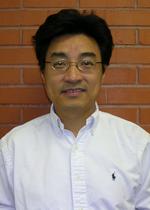 Download Slide Download Slide |
Qiudong Wang | Qiudong Wang, mathematical physicist, found an infinite-series solution to the generalized "n-body" problem, which is important in predicting the motions of planetary systems. | ||||||
 Download Slide Download Slide |
Subrahmanyan Chandrasekhar | Indian physicist, worked on wide range of astrophysical problems. Developed a theory about the structure of white dwarf stars, placed upper limit on mass of white dwarf stars. | ||||||
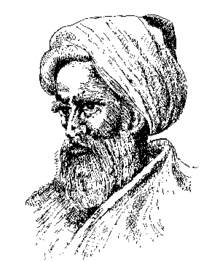 Download Slide Download Slide |
Ibn al-Haytham | Ibn al-Haytham (c.965 - c.1040 AD), aka Alhazen, was a physicist as well as a mathematician and astronomer during the Islamic Golden Age. Alhazen is most known for his contributions to optics and the scientific method. Going against the emission theory of Euclid and Ptolemy and the intromission theory of Aristotle, Ibn al-Haytham theorized that we see objects because the eyes receive the rays of light that reflect off an object (Wikipedia). His most famous work, Kitāb al-manāẓir, described this phenomenon and included details about reflection and refraction. Ibn al-Haytham was keen on using experimentation and mathematical reasoning to support his theories (Lorch). Alhazen also had an understanding that to prove a hypothesis, one must perform experiments of have numerical evidence. Through this practice, he showed an understanding of the scientific method many centuries before it was established. In addition to sight and the scientific method, Alhazen investigated the rainbow, moonlight, celestial physics, motion of the body, and more (Wikipedia). | Lorch, R. (2017, February 01). Ibn al-Haytham. Retrieved February 20, 2018, from Link Ibn al-Haytham. (2018, February 20). Retrieved February 20, 2018, from Link | |||||
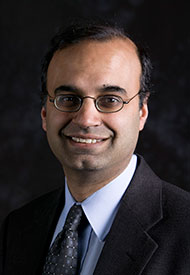 Download Slide Download Slide |
Deepto Chakrabarty | "In 1996, Prof. Chakrabarty was awarded the Ph.D. in Physics from the California Institute of Technology, following two years at the Lawrence Berkeley National Laboratory (1988-90) as a staff Physicist working on the Berkeley Automated Supernova Search. Prior to that, he completed his S.B. in Physics at MIT, in 1988. Professor Chakrabarty returned to MIT in 1996 for a two-year appointment as a NASA Compton GRO Postdoctoral Fellow, followed by a year spent as a Visiting Fellow at Balliol College, Oxford University (1998). In 1999, he accepted an Assistant Professorship within the Department of Physics at MIT. He was promoted to Associate Professor, with tenure, in July 2004. Professor Chakrabarty's most recent awards include an Alfred P. Sloan Research Fellowship (2001-03)." | Link | |||||
| 14 | Oscillations | |||||||
| 15 | Fluids and elasticity | |||||||
 Download Slide Download Slide |
Garrett Morgan | Invented the smoke mask, which uses many mechanisms studied in physics like gas separation depending on density. He also used electricity to invent electric traffic signals in Cleveland. | ||||||
| 16 | Macroscopic description of matter | |||||||
| 17 | 4 |  Download Slide Download Slide |
Bhāskara II | Bhāskara II was a 12th century Indian mathematician and astronomer. Among his many notable accomplishments, which include using differentials centuries before Newton “invented” calculus (Bhāskara II), Bhāskara II was one of the first to design a perpetual motion machine. The “Bhāskara wheel” has curved spokes filled with mercury, which flows downward in the direction of rotation, theoretically creating a shifting force to power perpetual rotation (Simanek 2010). Unfortunately, Bhāskara II didn’t account for the unbalancing effect of the mercury flow, which shifts the wheel’s center of mass and eventually disrupts rotation (Simanek). Bhāskara II’s design has remained a fascination for physicists and countless researchers have tried to optimize his design and create a truly perpetually rotating wheel. All have failed (Simanek). Bhāskara II was instrumental is the development of Indian mathematics, and was honored in 1981 with an eponymous satellite (Bhāskara II). | “Bhāskara II.” Wikipedia: The Free Encyclopedia. Wikimedia Foundation, Inc. 22 July 2004. Web. Accessed 30 Sept. 2017. Link Simanek, Donald. 2010. “The Shifting-Mass Overbalanced Wheel.” The Museum of Unworkable Devices, Lock Haven University. Accessed 30 Sept. 2017. Link | Jacob Harris | ||
| Work, heat, 1st law of thermodynamics | ||||||||
| 18 | Micro/macro connection for gas/thermo, entropy, 2nd law | |||||||
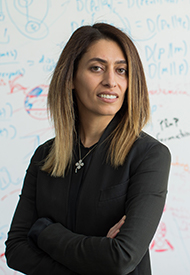 Download Slide Download Slide |
Nikta Fakhri | Nikta Fakhri joined the MIT Physics Department as an Assistant Professor in January 2015. She completed her undergraduate degree at Sharif University of Technology, Tehran, Iran and her PhD at Rice University. She was a Human Frontier Science Program postdoctoral fellow at Georg-August-Universistät in Göttingen, Germany before joining MIT. | Link | |||||
 Download Slide Download Slide |
Chen-Ning Yang | Chen-Ning Frank Yang, also known as Yang Zhenning, was born October 1, 1922. He is a Chinese physicist who works on statistical mechanics and particle physics. He and Tsung-dao Lee received the 1957 Nobel Prize in Physics for their work on parity non conservation of weak interaction. The two proved theoretically that one of the basic quantum-mechanics laws, the conservation of parity, is violated in the so-called weak nuclear reactions, those nuclear processes that result in the emission of beta or alpha particles. They had examined all experiments in the past and found that none of them proved parity conservation of weak interaction. Based on this, they came up with several ways to examine that parity non conservation of weak interaction and this theory has proved later on. | Link | |||||
 Download Slide Download Slide |
Jeevak Parpia | Chair, Department of Physics, Cornell University, Ithaca NY. Professor, Department of Physics, Cornell University Laboratory of Atomic and Solid State Physics “Professor of physics Jeevak Parpia, M.S. '77, Ph.D. '79, is one of three winners of the 2017 Fritz London Memorial Prize. The prize, administered by Duke University and awarded every three years, recognizes scientists who have made outstanding contributions to the field of low-temperature physics.” Jeevak Parpia studies low temperature physics, including * the physics of highly confined superfluid 3He * disordered superfluids * micro- and nano-mechanical resonators, their design, optimization, non-linear characteristics and the role of stress on these structures and graphene resonators Publications: http://parpia.lassp.cornell.edu/publications | Link Link | |||||
| 19 | Heat engines and refrigerators | |||||||
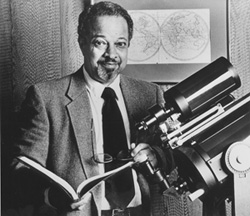 Download Slide Download Slide |
Arthur Walker Jr. | Arthur Bertram Cuthbert Walker Jr. (1936-2001) was a solar physicist and a pioneer of EUV/XUV. He was born in Cleveland, Ohio. Dr. Walker Jr. completed his undergraduate studies at Case Institute of technology in Cleveland in 1957 and earned his bachelor’s degree in physics. He completed both his master’s and doctorate degrees in astrophysics in the University of Illinois, in 1958 and 1962 respectively. He is most noted for having developed the solar corona. Two of his sounding rocket payloads, the Stanford/MSFC Rocket Spectroheliograph Experiment and the Multi-Spectral Solar Telescope Array, recorded the first full-disk, high-resolution images of the Sun in XUV with conventional geometries of normal incidence optics; this technology is now used in solar telescopes such as SOHO/EIT and TRACE, and in the fabrication of microchips via ultraviolet photolithography. Dr. Walker's scientific research focused on radiation from the Sun called extreme ultraviolet light and soft X-rays, which affect the chemistry of Earth's upper atmosphere, including the ozone layer. In the late 1970's, Dr. Walker became interested in what was then considered a risky and untested concept, called multilayer technology, for making special telescope mirrors that could reflect that radiation. He was a professor at Stanford University from 1974 until his death in 2001 and was a member of the Stanford’s Center for Space and Astrophysics at the school. In addition to his impressive contributions to the field, Dr. Walker Jr. spent a lifetime helping women and minority students find careers in science. He is credited with helping Stanford produce more black physicists with Ph.D.’s than any other university in the nation. | Arthur Bertram Cuthbert Walker, Jr. (n.d.). Retrieved February 18, 2018, from Link Arthur Bertram Cuthbert Walker, Jr. (n.d.). Retrieved February 18, 2018, from Link | |||||
| 20 | Traveling Waves | |||||||
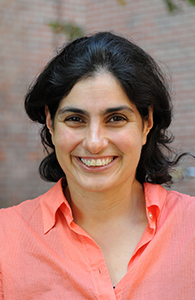 Download Slide Download Slide |
Nergis Mavalvala | Nergis Mavalvala is currently a Curtis and Kathleen Marble Professor of Astrophysics at MIT (“Nergis Mavalvala”, 2017). Her background includes that she was raised in Karachi, Pakistan, and moved to the United States in 1986 to study Physics at Wellesley College. There, she received a bachelor’s degree in astronomy and physics. ("Nergis Mavalvala", 2017). Her area of research is studying gravitational waves; she is well known for being among a team of scientists who detected gravitational waves for the first time. The team detected gravitational waves using the Laser Interferometer Gravitational-Wave Observatory (LIGO). ("Faculty", "Nergis Mavalvala") "The gravitational waves that LIGO detected are ripples in the space-time fabric caused by the motion of compact, massive astrophysical objects such as black holes and neutron stars." (MIT, Faculty) Nergis Mavalvala has earned multiple awards throughout her career. In 2017, she was elected to the National Academy of Sciences. ("Nergis Mavalvala", 2017) | “Faculty, Nergis Mavalvala.” MIT, 4 May 2017. Link “Nergis Mavalvala”. Wikipedia ,Wikimedia Foundation, 4 Sept. 2017. Link | Geneva Bedell | ||||
| 21 | Superposition | |||||||
| 22 | 1 |   Download Slide Download Slide |
Shirley Ann Jackson | Shirley Ann Jackson is an African-American physicist born in Washington D.C., on August 5th, 1946. She was the first African American women to get a PhD from MIT. Dr.Jackson studied hadrons as a research associate at the Fermi National Accelerator Laboratory in Batavia, Illinois. She was also a visiting scientist at CERN in Switzerland where she worked on theories relating to elementary particles. She was a part of the Theoretical Physics Research Department at AT&T Bell Laboratories in 1976 and studied materials used in the semiconductor industry. She also researched on the optical and electronic properties of two-dimensional and quasi-two dimensional systems. She made contributions to the knowledge of charged density waves in layered compounds and optical and electronic properties of semiconductor strained-layer superlattices. Since her postgraduate studies, she has been active in initiatives to increase African American participation in science and math. She has been serving as the president of Rensselear Polytechnic Institute since July 1, 1999. She was the first black woman to earn a PhD from MIT. She was the first black woman to be elected to the National Academy of Engineering. She did most of her research on optical and electronic properties of layered materials, surface electrons of liquid helium films, strained-layer semiconductor superlattices, and most notably, the polaronic aspects of electrons in two- dimensional systems. | [https://en.wikipedia.org/wiki/Shirley_Ann_Jackson](https://en.wikipedia.org/wiki/Shirley_Ann_Jackson) [http://www.nytimes.com/ref/college/faculty/coll_pres_jacksonbio.html](http://www.nytimes.com/ref/college/faculty/coll_pres_jacksonbio.html) [Diaz, S. (n.d.). Jackson, Shirley Ann.](http://www.blackpast.org/aah/jackson-shirley-ann-1946) | |||
| Wave Optics | ||||||||
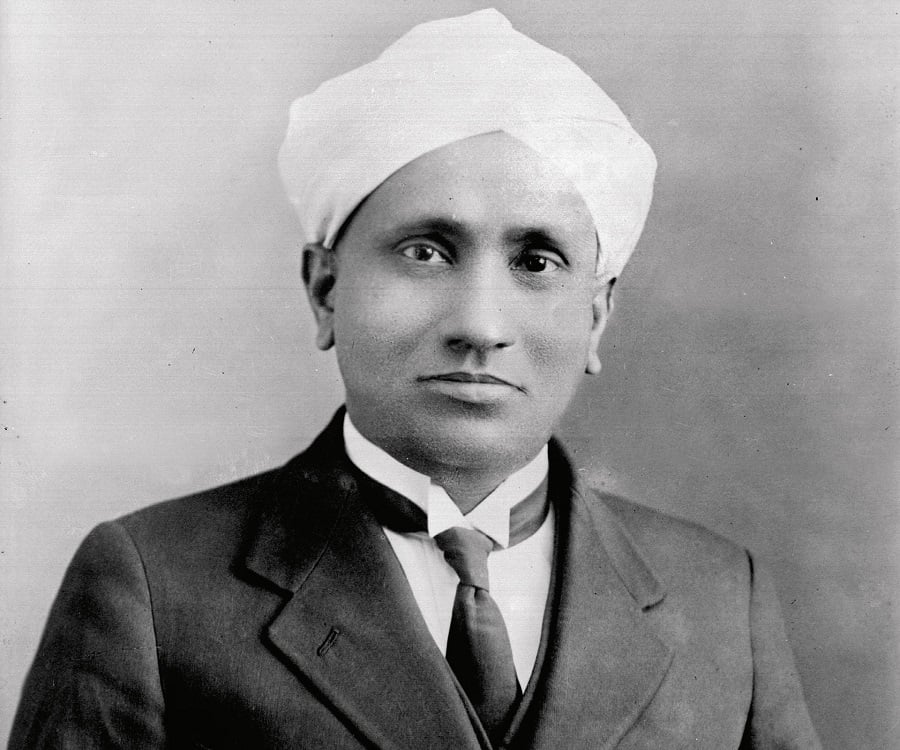 Download Slide Download Slide |
C.V. Raman | Sir Chandrasekhara Venkata Raman was the first Indian Physicist to win the Novel prize for his work in light scattering. He was born on November 7th, 1988 in Tamil Nadu. His father was a professor of physics and mathematics and his mother came from a family of scholars. In 1921, when he was returning to India from London, on the voyage, he became fascinated with the blue color of Mediterranean sea. He had some physics apparatus on him - a prism, a miniature spectroscope and a diffraction grating - which he used to prove that the sea was scattering sunlight by water molecule, which refutes Lord Rayleigh's explanation that the color of the sea is a reflection of the color of the sky. But Rayleigh argued that the blue color of the sky was caused by scattering of sunlight by the air molecules. From Raman's discovery, he was obsessed with the idea of light scattering. Analyzing the effect of scattering light by water was not easy, so Raman made visual observations of how scattered lights of different color passed through liquid. This visual observation is now called the Raman scattering and is the result of the Raman effect - the change in the wavelength of light that occurs when a light beam is deflected by molecules. Raman effect was an important discovery because after its discovery, physicists used this technique to study the vibration and rotation of molecules. By the late 1930s, the Raman effect was a principal method of chemical analysis because Raman spectroscopy could be easily used to solid, liquid, gas and aqueous solutions. | C.V. Raman The Raman Effect - Landmark. (n.d.). Retrieved from Link Home. (n.d.). Retrieved from Link Who is C.V. Raman? Everything You Need to Know. (n.d.). Retrieved from Link | |||||
 Download Slide Download Slide |
Robert Bragg | Robert Bragg was a African American born in Jacksonville , Florida in 1919 . He has made major contributions in the areas of materials characterization using x-ray diffraction and small angle x-ray scattering, and their use as a tool in studying heat-activated processes in materials. He developed methods of quantitative x-ray diffractions of compounds; e.g., Ca(OH)2 in hydrous silicates. Robert Bragg originated the now-standard practice of using the data as self-calibrating in the quantitative determination of preferred orientation in polycrystalline aggregates. His work provides clear guidance in the analysis of the diffraction patterns of materials of high transparency to x-rays, e.g. Be, B, and C. His novel studies of the coarsening of the microstructure of glassy carbon using small angle x-ray scattering have provided the accepted value for the activation energy for a-direction vacancy migration in graphite.His most important work is the recent demonstration that all apparently unordered carbon materials are mixtures of metastable carbon compounds, and his first principles derivation of the equations governing the phase transformations at high temperatures as these materials are converted to graphite. | Link | |||||
| 23 | Ray Optics | |||||||
| 24 | Optical Instruments | |||||||
 Download Slide Download Slide |
C.V. Raman | Sir Chandrasekhara Venkata Raman was the first Indian Physicist to win the Novel prize for his work in light scattering. He was born on November 7th, 1988 in Tamil Nadu. His father was a professor of physics and mathematics and his mother came from a family of scholars. In 1921, when he was returning to India from London, on the voyage, he became fascinated with the blue color of Mediterranean sea. He had some physics apparatus on him - a prism, a miniature spectroscope and a diffraction grating - which he used to prove that the sea was scattering sunlight by water molecule, which refutes Lord Rayleigh's explanation that the color of the sea is a reflection of the color of the sky. But Rayleigh argued that the blue color of the sky was caused by scattering of sunlight by the air molecules. From Raman's discovery, he was obsessed with the idea of light scattering. Analyzing the effect of scattering light by water was not easy, so Raman made visual observations of how scattered lights of different color passed through liquid. This visual observation is now called the Raman scattering and is the result of the Raman effect - the change in the wavelength of light that occurs when a light beam is deflected by molecules. Raman effect was an important discovery because after its discovery, physicists used this technique to study the vibration and rotation of molecules. By the late 1930s, the Raman effect was a principal method of chemical analysis because Raman spectroscopy could be easily used to solid, liquid, gas and aqueous solutions. | C.V. Raman The Raman Effect - Landmark. (n.d.). Retrieved from Link Home. (n.d.). Retrieved from Link Who is C.V. Raman? Everything You Need to Know. (n.d.). Retrieved from Link | |||||
 Download Slide Download Slide |
Sandra Faber | Sandra Moore Faber (born December 28, 1944) is a University Professor of Astronomy and Astrophysics at the University of California, Santa Cruz, and works at the Lick Observatory. She has made important discoveries linking the brightness of galaxies to the speed of stars within them and was the co-discoverer of the Faber–Jackson relation. Faber was also instrumental in designing the Keck telescopes in Hawaii. Faber studied at Swarthmore College, majoring in Physics and minoring in Mathematics and Astronomy. She earned her B.A. in 1966. Soon after she went on to earn her Ph.D. at Harvard University in 1972, where she studied Optical Observational Astronomy. During this time the only observatory open to her was the Kitt Peak National Observatory, which had inadequate technology for the complexity of her thesis. She is a woman. | Link | |||||
 Download Slide Download Slide |
Arthur Walker Jr. | Arthur Bertram Cuthbert Walker Jr. (1936-2001) was a solar physicist and a pioneer of EUV/XUV. He was born in Cleveland, Ohio. Dr. Walker Jr. completed his undergraduate studies at Case Institute of technology in Cleveland in 1957 and earned his bachelor’s degree in physics. He completed both his master’s and doctorate degrees in astrophysics in the University of Illinois, in 1958 and 1962 respectively. He is most noted for having developed the solar corona. Two of his sounding rocket payloads, the Stanford/MSFC Rocket Spectroheliograph Experiment and the Multi-Spectral Solar Telescope Array, recorded the first full-disk, high-resolution images of the Sun in XUV with conventional geometries of normal incidence optics; this technology is now used in solar telescopes such as SOHO/EIT and TRACE, and in the fabrication of microchips via ultraviolet photolithography. Dr. Walker's scientific research focused on radiation from the Sun called extreme ultraviolet light and soft X-rays, which affect the chemistry of Earth's upper atmosphere, including the ozone layer. In the late 1970's, Dr. Walker became interested in what was then considered a risky and untested concept, called multilayer technology, for making special telescope mirrors that could reflect that radiation. He was a professor at Stanford University from 1974 until his death in 2001 and was a member of the Stanford’s Center for Space and Astrophysics at the school. In addition to his impressive contributions to the field, Dr. Walker Jr. spent a lifetime helping women and minority students find careers in science. He is credited with helping Stanford produce more black physicists with Ph.D.’s than any other university in the nation. | Arthur Bertram Cuthbert Walker, Jr. (n.d.). Retrieved February 18, 2018, from Link Arthur Bertram Cuthbert Walker, Jr. (n.d.). Retrieved February 18, 2018, from Link | |||||
 Download Slide Download Slide |
Deepto Chakrabarty | "In 1996, Prof. Chakrabarty was awarded the Ph.D. in Physics from the California Institute of Technology, following two years at the Lawrence Berkeley National Laboratory (1988-90) as a staff Physicist working on the Berkeley Automated Supernova Search. Prior to that, he completed his S.B. in Physics at MIT, in 1988. Professor Chakrabarty returned to MIT in 1996 for a two-year appointment as a NASA Compton GRO Postdoctoral Fellow, followed by a year spent as a Visiting Fellow at Balliol College, Oxford University (1998). In 1999, he accepted an Assistant Professorship within the Department of Physics at MIT. He was promoted to Associate Professor, with tenure, in July 2004. Professor Chakrabarty's most recent awards include an Alfred P. Sloan Research Fellowship (2001-03)." | Link | |||||
| 25 | Electric Charges and Forces | |||||||
| 26 | The Electric Field | |||||||
| 27 | Gauss’s Law | |||||||
| 28 | The Electric Potential | |||||||
| 29 | Potential and Field | |||||||
| 30 | 4 | 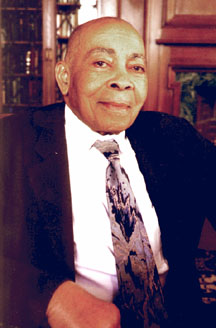 Download Slide Download Slide |
Warren Henry | Warren Henry was an African American Physicist that had somewhat of an astute background for a black man of his time. Both of his parents had graduated from the Tuskegee Institute, and George Washington Carver lived and conducted research on his parent’s farm during the summer months (Williams). It can be quite apparent to see where his interest in the sciences more than likely came from during his childhood. He later attended Tuskegee where he majored in Mathematics, English, and French (Williams). Later wanting to conduct research, he turned to Rutgers University where they then turned him away (Williams). As a result, he ended up going to the Naval Research Laboratory where he would reside for the next 12 years (Williams). During that time he was able to research and gain the knowledge of materials that were at a rather low temperature (Williams). His expertise regarding low-temperature research was probably unsurpassed in the U.S. while at the Naval Research Laboratory. He was also the head of several projects at several institutions like UC Berkeley amongst others. Even though his research in low temperatures was quite significant, he was most known for his work in magnetism and superconductivity. His work in this field was what brought him the most praise by the scientific community. He had written a highly detailed study that consisted of a "demonstration of the proof of non-interacting paramagnetic ions and how they’re a significant contribution” when considering magnetism and superconductivity (Williams). His work was a significant contribution to the world because his models and ideas have been implemented into modern textbooks, and are still widely used to this day. A prime example of that being the demonstration I had spoken of earlier that took place back in 1934. [Commentary from a second student:] Warren Henry (1909 – 2001) was an African American physicist who specialized in the fields of magnetism and superconductivity (Williams 2008). His contributions to the world of physics include hundreds of published articles regarding his research, the partial discovery of paramagnetism and how it works on a quantum level, and a “demonstration of the proof of non-interacting paramagnetic ions” (Williams 2008). His research was important for the U.S. naval forces during the time of the Vietnam War, as U.S. submarines were able to be equipped with better technology and sonar. He received his undergraduate degree in mathematics, English, and French from Tuskegee Institute, and he received his PhD in physical chemistry in 1941 from University of Chicago (“Warren Elliot Henry”). His background also includes an education involving many Nobel Prize winning scientists; “Arthur Compton taught him quantum mechanics, Wolfgang Pauli taught nuclear forces, Robert Millikan taught molecular spectra” (Williams 2008). Henry was a recipient of the Lifetime Achievement Award from the National Science Foundation, and is recognized as one of the best, most important African American physicists of all time (“Warren Elliot Henry”). | Physics Central. “Africn Americans in Physics.” Physics Buzz, American Physical Society, 27 Feb. 2013, Link physics.html Williams, Scott. “Physicist of the African Diaspora - Warren E Henry.” Warren E. Henry - Physicist of the African Diaspora, Bonvibre & Daughters, Link mad/physics/henry_warren.html Williams, Scott. "Warren Henry." Physicists of the African Diaspora, edited by Scott Williams, 2008. "Warren Elliot Henry." Wikipedia: The Free Encyclopedia, Wikimedia Foundation, Inc, Link | Joshua Maclin | ||
| Current and Resistance | ||||||||
 Download Slide Download Slide |
Isamu Akasaki | The main contribution of Isamu Akasaki is in the semiconductor field. He, along with Hiroshi Amano and Shuji Nakamura invented efficient blue light-emitting diodes, and won the 2014 Noble Prize in Physics. He worked on GaN to make high-brightness blue LED light. As a result, people are able to have bright white LED light as an energy-saving light source. | "Isamu Akasaki." Isamu Akasaki - Engineering and Technology History Wiki, Link "Isamu Akasaki." Wikipedia, Wikimedia Foundation, 4 Oct. 2017, Link | |||||
  Download Slide Download Slide |
Shirley Ann Jackson | Shirley Ann Jackson is an African-American physicist born in Washington D.C., on August 5th, 1946. She was the first African American women to get a PhD from MIT. Dr.Jackson studied hadrons as a research associate at the Fermi National Accelerator Laboratory in Batavia, Illinois. She was also a visiting scientist at CERN in Switzerland where she worked on theories relating to elementary particles. She was a part of the Theoretical Physics Research Department at AT&T Bell Laboratories in 1976 and studied materials used in the semiconductor industry. She also researched on the optical and electronic properties of two-dimensional and quasi-two dimensional systems. She made contributions to the knowledge of charged density waves in layered compounds and optical and electronic properties of semiconductor strained-layer superlattices. Since her postgraduate studies, she has been active in initiatives to increase African American participation in science and math. She has been serving as the president of Rensselear Polytechnic Institute since July 1, 1999. She was the first black woman to earn a PhD from MIT. She was the first black woman to be elected to the National Academy of Engineering. She did most of her research on optical and electronic properties of layered materials, surface electrons of liquid helium films, strained-layer semiconductor superlattices, and most notably, the polaronic aspects of electrons in two- dimensional systems. | [https://en.wikipedia.org/wiki/Shirley_Ann_Jackson](https://en.wikipedia.org/wiki/Shirley_Ann_Jackson) [http://www.nytimes.com/ref/college/faculty/coll_pres_jacksonbio.html](http://www.nytimes.com/ref/college/faculty/coll_pres_jacksonbio.html) [Diaz, S. (n.d.). Jackson, Shirley Ann.](http://www.blackpast.org/aah/jackson-shirley-ann-1946) | |||||
 Download Slide Download Slide |
Garrett Morgan | Invented the smoke mask, which uses many mechanisms studied in physics like gas separation depending on density. He also used electricity to invent electric traffic signals in Cleveland. | ||||||
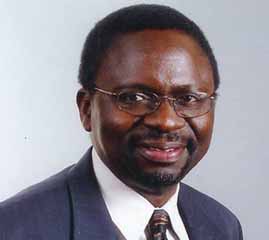 Download Slide Download Slide |
Ilesanmi Adesida | Ilesanmi Adesida is a physicist of Nigerian descent who is currently the provost at Nazarbayev University in Kazakhstan (“Ilesanmi Adesida”). Adesida is an expert in the processing of semiconductors and other materials at the nanometer-scale level and in high- speed field-effect transistors, which are found in cell phones (“Ilesanmi Adesida”). While he was a professor at the University of Illinois at Urbana-Champaign, he and his students worked on these transistors in cell phones and other electronic devices by developing devices in the key materials such as indium phosphide, silicon carbide, and gallium nitride used in high- performance wireless applications (“Ilesanmi Adesida”, “Who are the Black Physicists”). His other activities center on studying dislocations in gallium nitride using photoelectrochemical etching and investigating high speed field-effect transistors in various chemical structures (“Who are the Black Physicists”). | “Ilesanmi Adesida.” Wikipedia: The Free Encyclopedia. Wikimedia Foundation, Inc. 2 September 2017. Web. 5 October 2017. Williams, Scott. “Who Are the Black Physicists.” Ilesanmi Adesida - Computer Scientist, Physicist of the African Diaspora, State University of New York at Buffalo, 25 May 1997, | |||||
| 31 | Fundamentals of Circuits | |||||||
| 32 | 2 |  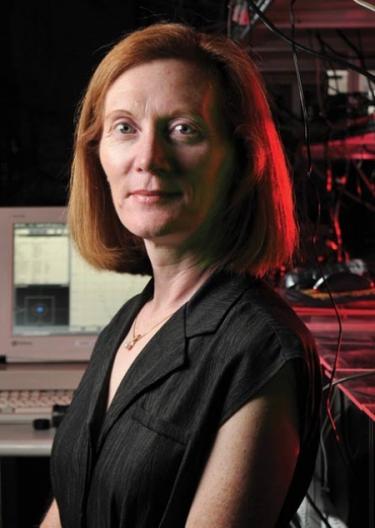 Download Slide Download Slide |
Margaret Murnane | Margaret Murnane is an optical physicist at the University of Colorado. She has built "the fastest things that humans have ever created" lasers which can flash for "ten quadrillionths of a second"! Her background includes the fact that "physics was [her] worst subject in high school" but she dreamed of being a physicist because she loved the "excitement of discovery." She and her husband now run a lab at the University of Colorado. In the lab, she records "some of the fastest motions in our natural world." Her lasers can capture the movement of electrons. Her newest laser and x-ray beams can flash for less than 0.00000000000000001 seconds. Talk about "in the blink of an eye!" She is able to pass on excitement and knowledge to students. Scientists use her lasers which are based on her titanium-sapphire design to study a wide range of phenomena (chemical reactions, etc.). | Link Link | |||
| The Magnetic Field | ||||||||
 Download Slide Download Slide |
Warren Henry | Warren Henry was an African American Physicist that had somewhat of an astute background for a black man of his time. Both of his parents had graduated from the Tuskegee Institute, and George Washington Carver lived and conducted research on his parent’s farm during the summer months (Williams). It can be quite apparent to see where his interest in the sciences more than likely came from during his childhood. He later attended Tuskegee where he majored in Mathematics, English, and French (Williams). Later wanting to conduct research, he turned to Rutgers University where they then turned him away (Williams). As a result, he ended up going to the Naval Research Laboratory where he would reside for the next 12 years (Williams). During that time he was able to research and gain the knowledge of materials that were at a rather low temperature (Williams). His expertise regarding low-temperature research was probably unsurpassed in the U.S. while at the Naval Research Laboratory. He was also the head of several projects at several institutions like UC Berkeley amongst others. Even though his research in low temperatures was quite significant, he was most known for his work in magnetism and superconductivity. His work in this field was what brought him the most praise by the scientific community. He had written a highly detailed study that consisted of a "demonstration of the proof of non-interacting paramagnetic ions and how they’re a significant contribution” when considering magnetism and superconductivity (Williams). His work was a significant contribution to the world because his models and ideas have been implemented into modern textbooks, and are still widely used to this day. A prime example of that being the demonstration I had spoken of earlier that took place back in 1934. [Commentary from a second student:] Warren Henry (1909 – 2001) was an African American physicist who specialized in the fields of magnetism and superconductivity (Williams 2008). His contributions to the world of physics include hundreds of published articles regarding his research, the partial discovery of paramagnetism and how it works on a quantum level, and a “demonstration of the proof of non-interacting paramagnetic ions” (Williams 2008). His research was important for the U.S. naval forces during the time of the Vietnam War, as U.S. submarines were able to be equipped with better technology and sonar. He received his undergraduate degree in mathematics, English, and French from Tuskegee Institute, and he received his PhD in physical chemistry in 1941 from University of Chicago (“Warren Elliot Henry”). His background also includes an education involving many Nobel Prize winning scientists; “Arthur Compton taught him quantum mechanics, Wolfgang Pauli taught nuclear forces, Robert Millikan taught molecular spectra” (Williams 2008). Henry was a recipient of the Lifetime Achievement Award from the National Science Foundation, and is recognized as one of the best, most important African American physicists of all time (“Warren Elliot Henry”). | Physics Central. “Africn Americans in Physics.” Physics Buzz, American Physical Society, 27 Feb. 2013, Link physics.html Williams, Scott. “Physicist of the African Diaspora - Warren E Henry.” Warren E. Henry - Physicist of the African Diaspora, Bonvibre & Daughters, Link mad/physics/henry_warren.html Williams, Scott. "Warren Henry." Physicists of the African Diaspora, edited by Scott Williams, 2008. "Warren Elliot Henry." Wikipedia: The Free Encyclopedia, Wikimedia Foundation, Inc, Link | Joshua Maclin | ||||
| 33 | Electromagnetic Induction | |||||||
| 34 | Electromagnetic Fields and Waves | |||||||
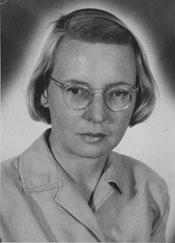 Download Slide Download Slide |
Ruby Payne-Scott | Ruby Payne-Scott was an Australian born physicist and radio astronomer. She began work as a physicist with the cancer treatment center at the University of Sydney where she focused on radiation therapy as a form of cancer treatment. She later completed her master's thesis on wavelength distributions of radiation. Ruby worked briefly as a teacher before receiving a job in the radiophysics division of the Commonwealth Scientific and Industrial Research Organization where she worked on radar technology for the army. Her most notable contribution, however, lay in her interest in extraterrestrial radio signals. She demonstrated, with the help of two colleagues, that radio brightness across the sky could be treated as a two-dimensional sum of an infinite series of simple waveforms and showed that it could be computed using the Fourier transform. Ruby's work served as a mathematical foundation for radio astronomy. In addition to being a brilliant scientist, she was an avid supporter of women's rights believing in equal employment and pay for women. | Goss, W., & Hooker, C. (2018). Biography - Ruby Violet Payne-Scott - Australian Dictionary of Biography. Adb.anu.edu.au. Retrieved 19 February 2018, from Link Ruby Payne-Scott [1912-1981] - CSIROpedia. (2018). CSIROpedia. Retrieved 19 February 2018, from Link | Megan Hedinger | ||||
| 35 | AC Circuits | |||||||
| 36 | Relativity | |||||||
 Download Slide Download Slide |
Nergis Mavalvala | Nergis Mavalvala is currently a Curtis and Kathleen Marble Professor of Astrophysics at MIT (“Nergis Mavalvala”, 2017). Her background includes that she was raised in Karachi, Pakistan, and moved to the United States in 1986 to study Physics at Wellesley College. There, she received a bachelor’s degree in astronomy and physics. ("Nergis Mavalvala", 2017). Her area of research is studying gravitational waves; she is well known for being among a team of scientists who detected gravitational waves for the first time. The team detected gravitational waves using the Laser Interferometer Gravitational-Wave Observatory (LIGO). ("Faculty", "Nergis Mavalvala") "The gravitational waves that LIGO detected are ripples in the space-time fabric caused by the motion of compact, massive astrophysical objects such as black holes and neutron stars." (MIT, Faculty) Nergis Mavalvala has earned multiple awards throughout her career. In 2017, she was elected to the National Academy of Sciences. ("Nergis Mavalvala", 2017) | “Faculty, Nergis Mavalvala.” MIT, 4 May 2017. Link “Nergis Mavalvala”. Wikipedia ,Wikimedia Foundation, 4 Sept. 2017. Link | Geneva Bedell | ||||
| 37 | The Foundations of Modern Physics | |||||||
 Download Slide Download Slide |
Shin'ichirō Tomonaga | Shin'ichirō Tomonaga was born on March 31, 1906 in Tokyo, Japan. He is a Japanese scientist who won the Nobel Prize in Physics in 1965 for developing basic principles of quantum electrodynamics. He was a professor of Physics at the Tokyo University of Education. From 1937 to 1939, he was in Germany to study nuclear physics and the quantum field theory. In 1940, he developed the intermediate coupling theory in order to clarify the structure of the meson cloud around the nucleon. During WWII, he solved the motion of electrons in the magnetron and also developed a unified theory of systems consisting of wave guides and cavity resonators. Dr. Tomonaga was the President of the Tokyo University of Education from 1956 to 1962. He has actively campaigned against the spread of nuclear weapons and for peaceful use of nuclear energy. | Link Link bio.html Link | |||||
 Download Slide Download Slide |
Michio Katu | Professor Michio Kaku, born in 1947, is a theoretical physicist, futurist, and popularizer of science. He is one of the co-founder of string field theory, a branch of string theory, which intends to unite Albert Einstein's earlier findings with quantum physics. His research focuses on superstring theory, supergravity, supersymmetry, and hadronic physics. He has authored more than 70 articles and several highly-accessible science books. He grew up a science enthusiast. Story has it that he built an atom smasher in his parents' garage for his high school science fair. His effort to popularize science has made him a well-known public figure. He has made multiple appearance on TV programs and film. A fun fact about him is that in 2016, he appeared in a TV commercial for Turbo Tax. He has spent majority of his academic career teaching Theorectical Physics at the City College of New York. | Michio Kaku Biolography (April 2,2014) Retrived from access date February 18, 2018) | Yuyu Zhang | ||||
| Miranda Cheng | Miranda Cheng is a mathematician and theoretical physicist at the University of Amsterdam. She works with the theoretical concept of Umbral Moonshine, which works with the presence of shadows in the theory of mock modular forms. Her background includes dropping out of high school in Taiwan to be part of a punk rock band at the age of 16 and then later entering university as a part of a gifted program. She now works as an assistant professor at the University of Amsterdam and does work connecting to K3 surfaces and string theory. She is able to pass on excitement and knowledge to students and expand the field of theoretical physics as is related to mathematics. | “Miranda Cheng.” Wikipedia, Wikimedia Foundation, 17 Feb. 2018, en.wikipedia.org/wiki/Miranda_Cheng. Amsterdam, Universiteit van. “Dr. C.N. (Miranda) Cheng.” Home - Universiteit Van Amsterdam, 13 Dec. 2017, www.uva.nl/en/profile/c/h/c.n.cheng/c.n.cheng.html. | ||||||
 Download Slide Download Slide |
Subrahmanyan Chandrasekhar | Indian physicist, worked on wide range of astrophysical problems. Developed a theory about the structure of white dwarf stars, placed upper limit on mass of white dwarf stars. | ||||||
 Download Slide Download Slide |
E. C. George Sudarshan | E. C. George Sudarshan is a theoretical physicist born in Pallam, Kerala. He has made significant contributions such as proposing the theory of V-A WeakForce which is central to radioactive decay and nuclear fission. Controversially, he was not awarded a Nobel Prize for his work on quantum optics (Sudharshan-Glauber representation), while Glauber received recognition for it in 2005. | E. C. George Sudarshan. (2018, February 20). Retrieved February 20, 2018, from Link | |||||
 Download Slide Download Slide |
Jeevak Parpia | Chair, Department of Physics, Cornell University, Ithaca NY. Professor, Department of Physics, Cornell University Laboratory of Atomic and Solid State Physics “Professor of physics Jeevak Parpia, M.S. '77, Ph.D. '79, is one of three winners of the 2017 Fritz London Memorial Prize. The prize, administered by Duke University and awarded every three years, recognizes scientists who have made outstanding contributions to the field of low-temperature physics.” Jeevak Parpia studies low temperature physics, including * the physics of highly confined superfluid 3He * disordered superfluids * micro- and nano-mechanical resonators, their design, optimization, non-linear characteristics and the role of stress on these structures and graphene resonators Publications: http://parpia.lassp.cornell.edu/publications | Link Link | |||||
| 38 | Quantization | |||||||
 Download Slide Download Slide |
Nguyễn Văn Hiệu | Nguyễn Văn Hiệu (born 1938) is a Vietnamese professor, physicist, and politician. He studied physics in Vietnam and then later, the Soviet Union. He was the head of the research team at the Soviet Dubna Institute for Nuclear Research. He’s the founder of VNU University of Engineering and Technology in Vietnam. He is one of the best professor, PhD in the field of theoretical physics and mathematical physics of Vietnam. | Link | |||||
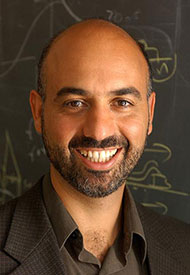 Download Slide Download Slide |
Raymond Ashoori | "A graduate of the University of California at San Diego (B.A. 1984) and Cornell University (Ph.D. 1991), Professor Ashoori joined the MIT faculty in 1993, after serving as a postdoctoral member of the technical staff at AT&T Bell Laboratories. He was promoted to Associate Professor in 1998 and full Professor in July 2004." | Link | |||||
| 39 | Wave Functions and Uncertainty | |||||||
 Download Slide Download Slide |
Sylvester James Gate | Sylvester Gates is an American theoretical physicists for the Ford Foundation Professor at Brown University. Gates has received many accolades for his work including being a member of the National Academy of Sciences and receiving the National Medal of Science from President Obama. His work relates to supersymmetry, supergravity, and superstring theory, especially relating to the Adinkra Symbol to gain a better understand and graphically represent supersymmetric algebras. As a kid Gates gained an interest in the physics from books that his father brought home that inside was Schroedinger's equation. From that moment Gates became shocked by the mathematical representation of the world around him, ranging from the simple movement of a ball down a plane to a physics of the cosmos. | McMaster, Joe. _View points on String Theory_. PBS, July 2003, [www.pbs.org/wgbh/nova/elegant/view- gates.html](http://www.pbs.org/wgbh/nova/elegant/view-gates.html). Gates , Sylvester James. “Bio Sylvester James Gates .” _Department of Physics_ , University of Maryland - College Park , [www.umdphysics.umd.edu/people/faculty/current/item/167-gatess.html#biography](http://www.umdphysics.umd.edu/people/faculty/current/item/167-gatess.html#biography). | |||||
| 40 | One-Dimensional Quantum Mechanics | |||||||
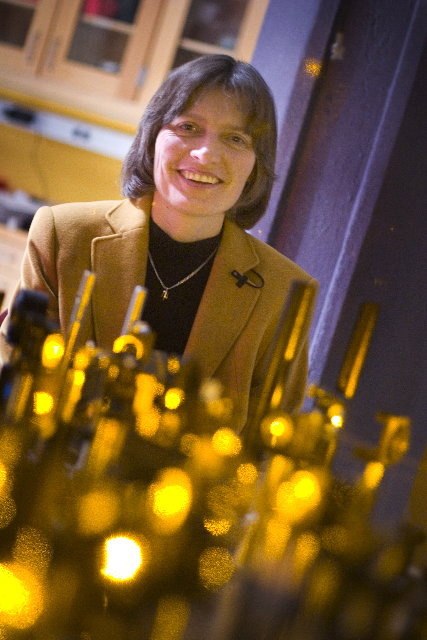 Download Slide Download Slide |
Lene Hau | Lene Vestergaard Hau (born November 13, 1959 in Vejle, Denmark) is a Danish physicist. In 1999, she led a Harvard University team who, by use of a Bose-Einstein condensate, succeeded in slowing a beam of light to about 17 metres per second, and, in 2001, was able to stop a beam completely. Later work based on these experiments led to the transfer of light to matter, then from matter back into light,[2] a process with important implications for quantum encryption and quantum computing. More recent work has involved research into novel interactions between ultracold atom and nanoscopic scale systems. In addition to teaching physics and applied physics, she has taught Energy Science at Harvard,[3] involving photovoltaic cells, nuclear power, batteries, and photosynthesis | Link | |||||
| 41 | 8 | 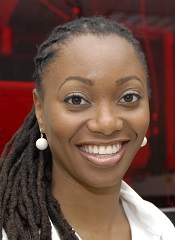 Download Slide Download Slide |
Dr. Hadiyah Green | The more I learn about the scientific community, the more I learn about the issues of sexism and racism affecting women and minorities wanting to do research. There is definitely a stigma against women and women of color wanting to do research at a professional level. Countless are the cases, of female scientists that have to choose between having a family and their professional careers, and smaller is the number of women of color that have a leadership position in the labs where they do research. For this reason, it is important to shed the light on inspiring women who are making major contributions to their fields because they are role models that future scientists can look up to. I found a scientist who is making groundbreaking discoveries in the field of lasers. Her name is Hadiyah Green and she is developing laser technologies to kill cancer cells. She earned her PhD in Physics from the University of Alabama Birmingham. After her closest relatives were diagnosed with cancer, she decided to use her background to develop lasers that selectively target cancer cells through the use of nanoparticles. She has tested her treatment on mice and has obtained promising results. In the future, she hopes to advance her research to make it useful for humans. | Link technology-that-kills-cancer-cells-with-lasers/?refresh | Irving Barrera | ||
| Atomic Physics | ||||||||
| 42 | 2 | 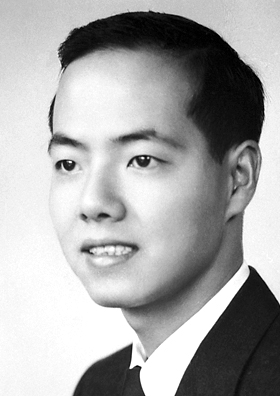 Download Slide Download Slide |
Tsung-Dao Lee | Tsung-Dao Lee is a Chinese-American physicist, known for his work on parity violation, the Lee Model, particle physics, relativistic heavy ion physics, nontopological solitons and soliton stars. He was a recipient of the 1957 Nobel Prize in Physics at the age of 30. Lee conducted the majority of his life's research at Columbia University, where his first work was on a solvable model of quantum field theory known as the Lee Model. Later, he worked on the puzzle of K meson decay, through which he studied parity non-conservation in weak interactions. This work led to his winning the Nobel Prize in Physics. He was also very active in statistical mechanics, astrophysics, and a number of other disciplines. | Lee, T. D., & Yang, C. N. (1956). Question of parity conservation in weak interactions. Physical Review, 104(1), 254. Lee, T. D. (1981). Particle Physics and Introduction to Field Theory, Comtemporary Concepts in Physics Vol. 1. Harwood academic publishers. Lee, T. D., & Yang, C. N. (1952). Statistical theory of equations of state and phase transitions. II. Lattice gas and Ising model. Physical Review, 87(3), 410. Yang, C. N., & Lee, T. D. (1952). Statistical theory of equations of state and phase transitions. I. Theory of condensation. Physical Review, 87(3), 404. | Khai Nguyen | ||
  Download Slide Download Slide |
Chien-Shiung Wu | Chien-Shiung Wu (1912-1997) was a Chinese-American experimental physicist who made significant contributions in the field of nuclear physics1 (Wikipedia). Wu worked on the infamous Manhattan Project where she developed the process of separating uranium metal to uranium-235 and uranium-238 by gaseous diffusion1 (Wikipedia). Her work was credited to contradict the hypothetical Law of Conservation of Parity, which at the time was a well-established law and basically entailed a very complicated way of proving the idea of symmetry, where particles that are mirror images of each other will act in identical ways3 (ListVerse). Her experiments were incredibly significant in that she was able to show that one particle was more likely to eject an electron than the other and they were therefore not symmetrical and that observation overturned a 30-year belief and shattered the conservation of parity law3 (ListVerse). The discovery of parity violation was a major contribution to particle physics and the development of the Standard Model which is a paradigm of the modern quantum field theory2 (Wikipedia). It is little wonder that Wu is now hailed as “The First Lady of Physics” and the “Chinese Marie Curie”1(Wikipedia). However, unfortunately, like many of her contemporary female scientists, Wu’s work was discredited and her male co-workers Lee and Yang got awarded the Nobel Prize for Physics for ‘her’ experiment3 (ListVerse). In fact, she received no mention or credit for her significant contribution to the project until 1978, when she was awarded the inaugural Wolf Prize for Physics two decades after her ground-breaking experiment1(Wikipedia). [Commentary from a second student:] Wu was born in 1912. She got her B.E. from the National Central University of Nanking, China. She then got her Ph.D from University of California, Berkeley. Wu disproved the law of conservation of parity. She found that parity was not conserved in nuclear beta decay. She has many other achievements, such as working on the Manhattan Project and helped in the development of a more sensitive Geiger counter. | Chien-Shiung Wu. Wikipedia. The Free Encyclopedia. Wikimedia Foundation, Inc. 20 September 2017. Web. 06 October 2017. Link Standard Model. Wikipedia. The Free Encyclopedia. Wikimedia Foundation, Inc. 16 September 2017. Web. 06 October 2017. Link 10 Groundbreaking Women Scientists Written Off By History. Shelby Hoebee. October 14, 2013. ListVerse. Link Accessed 06 October 2017. Johnson, L. (2018). CWP at physics.UCLA.edu // Chien-Shiung Wu. Cwp.library.ucla.edu. Retrieved 21 February 2018, from Link Parity | particle physics. (2018). Encyclopedia Britannica. Retrieved 21 February 2018, from Link | Khyrul Khan Chien-Shiung Wu | ||||
| Nuclear Physics | ||||||||
| Ursula Franklin | Ursula Martius Franklin, CC OOnt FRSC (16 September 1921 – 22 July 2016), was a German-Canadian metallurgist, research physicist, author, and educator who taught at the University of Toronto for more than 40 years. Franklin was a pioneer in the field of archaeometry, which applies modern materials analysis to archaeology. She worked for example, on the dating of prehistoric bronze, copper and ceramic artifacts. In the early 1960s Franklin was one of a number of scientists who participated in the Baby Tooth Survey, a project founded by Eric and Louise Reiss along with other scientists such as Barry Commoner, which investigated levels of strontium-90—a radioactive isotope in fallout from nuclear weapons testing—in children's teeth. This research contributed to the cessation of atmospheric weapons testing. Franklin published more than a hundred scientific papers and contributions to books on the structure and properties of metals and alloys as well as on the history and social effects of technology. | Link | ||||||
 Download Slide Download Slide |
Michael Ramsey-Musolf | Michael Ramsey-Musolf is an openly gay professor at UMass Amherst and is also an Episcopal priest. He studies topics such as nuclear physics, theoretical physics, dark matter, and more. Dr. Ramsey-Musolf experienced discrimination at many former workplaces, something he refers to as the "lavender cieling" but in spite of such, he has advanced his career and research. He has a PhD in Physics from Princeton and a Master of Divinity from the Episcopal Divinity School which he completed as a post-doc at MIT. | Link Link Link Link | Olivia Wallace | ||||
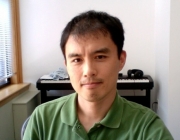 Download Slide Download Slide |
Masahiro Morii | Masahiro Morii is an experimental physicist working on studies of elementary particles and their interactions. He is currently involved in the ATLAS experiment at the Large Hadron Collider at CERN. The experiment is anticipated to uncover the origin of the electroweak symmetry breaking, and has a great potential for discovering new physics beyond the Standard Model. Prof. Morii has also been involved in the LUX Dark Matter Experiment, which operates in the Sanford Underground Laboratory at Homestake, SD. The experiment uses 300 kg of liquid xenon to detect the Dark Matter - an invisible form of matter which make up 4/5 of the mass of the Universe. | Link | |||||
 Download Slide Download Slide |
Lise Meitner | Lise Meitner (English /ˈliːzə ˈmaɪtnər/; 7 November 1878 – 27 October 1968) was an Austrian-Swedish physicist who worked on radioactivity and nuclear physics. Otto Hahn and Meitner led the small group of scientists who first discovered nuclear fission of uranium when it absorbed an extra neutron; the results were published in early 1939. Meitner and Otto Frisch understood that the fission process, which splits the atomic nucleus of uranium into two smaller nuclei, must be accompanied by an enormous release of energy. This process is the basis of the nuclear weapons that were developed in the U.S. during World War II and used against Japan in 1945. Nuclear fission is also the process exploited by nuclear reactors to generate electricity. | Link | |||||
 Download Slide Download Slide |
Fabiola Gianotti | Fabiola Gianotti (born October 29, 1960) is an Italian particle physicist, currently CERN (European Organization for Nuclear Research) Director-General and the first woman to hold this position. Fabiola Gianotti received a Ph.D. in experimental particle physics from the University of Milan in 1989. Since 1996, following several postdoctoral positions, including a fellowship at CERN, she has been a research physicist in the Physics Department of CERN, the European Organization for Nuclear Research, and since August 2013 an honorary Professor at the University of Edinburgh. She is also a member of the Italian Academy of Sciences (Accademia Nazionale dei Lincei), foreign associate member of the US National Academy of Sciences[4] and foreign associate of the French Academy of Science. Gianotti has worked on several CERN experiments (WA70, UA2 experiment, ALEPH, ATLAS), being involved in detector R&D and construction, software development and data analysis. | Link | |||||
 Download Slide Download Slide |
E. C. George Sudarshan | E. C. George Sudarshan is a theoretical physicist born in Pallam, Kerala. He has made significant contributions such as proposing the theory of V-A WeakForce which is central to radioactive decay and nuclear fission. Controversially, he was not awarded a Nobel Prize for his work on quantum optics (Sudharshan-Glauber representation), while Glauber received recognition for it in 2005. | E. C. George Sudarshan. (2018, February 20). Retrieved February 20, 2018, from Link | |||||
 Download Slide Download Slide |
Chen-Ning Yang | Chen-Ning Frank Yang, also known as Yang Zhenning, was born October 1, 1922. He is a Chinese physicist who works on statistical mechanics and particle physics. He and Tsung-dao Lee received the 1957 Nobel Prize in Physics for their work on parity non conservation of weak interaction. The two proved theoretically that one of the basic quantum-mechanics laws, the conservation of parity, is violated in the so-called weak nuclear reactions, those nuclear processes that result in the emission of beta or alpha particles. They had examined all experiments in the past and found that none of them proved parity conservation of weak interaction. Based on this, they came up with several ways to examine that parity non conservation of weak interaction and this theory has proved later on. | Link |
And here are some scientists descriptions my students wrote up. Feel free to add them!
Scientists
En'hedu'anna
Somebody needs to include her! The first scientist we have a record of a is a Sumerian woman astronomer! Here are some pointers to start!
Zhang Heng
Zhang Heng, astronomer, mathematician, inventor and poet in China’s Han Dynasty (78-139 C.E.). Invented the world’s first seismometer (for detecting earthquakes), improved the water clock, and developed a water-powered instrument to help measure the positions of stars and planets.
Henrietta Swan Leavitt
Henrietta Swan Leavitt, whose job was documenting the characteristics of "Cephid variable" stars in the early 1900’s, before computers were available to do such work. These stars have a brightness that varies with a stable period, and Henrietta’s job was to look at photographic plates that contained images such variable stars. In the process of examining over 1700 images of stars in a nearby galaxy, she discovered an important regularity between the brightness of such stars and the period of the variation of the star. That discovery let scientists determine the distance to other galaxies, which helped lead to the discovery that the universe is expanding.
Whisoh Lee
Whisoh Lee, a Korean theoretical physicist worked on fundamental particle physics, and whose work influenced Abdus Salam’s work on electro-weak theory as well as the developing the basis for the Higg’s mechanism.
Abdus Salam
Abdus Salam– Pakistani theoretical physicist, earned the Nobel Prize in 1979 for his work unifying electromagnetism with the weak interaction (responsible for "beta decay" of radioactive elements).
Ibn Sahl
Snell's law was "first discovered in the 10th century by the Persian scientist Ibn Sahl, not centuries later by Snell" Scientists Must Challenge What Makes Studies Scientific
Al Hazen Ibn al-Haytham
Invented pinhole camera Wikipedia entry
Notes to me/developers
The python script here autogenerates annotated tables of contents. I usually run it via the Jupyter notebook, Annotating.ipynb.
Also worth noting: when I assign this in class as a Moodle assignment, Moodle tends to turn markdown into HTML. To get the markdown back, I use html2text (originally written by Aaron Swartz). I do this on the command line, in zsh:
for f in *.html; do html2text < $f > ${f:r}.md; doneTODO
- Make everyone go through the form
- Add more textbooks
- Specifically, since I'm switching to Matter and Interactions, add that.
- This will likely require fixing all of the stuff that isn't really factored in terms of where textbooks, powerpoint slides, etc. actually live.
- Consider restructuring to make adding more textbooks easier.
- Maybe the work of adding a textbook comes on the professor side (or, at least, is less frequent).
- Adding the textbook gives a mapping between topics and chapters.
- Filling out The Form has students select a chapter and then a list of topics.
- That topic selection can be mapped, behind the scenes, to the map of a new textbook.
- Maaaaayyyybeeee I should consider a real database?!
- Focus on 2nd semester
- Fix mixup between calc-based and algebra-based
- Here, note for example that Sylvester James Gate is listed in 2nd edition, but is showing up in 3rd
- Also note that I may have turned some 2nd edition ones into 3rd by accident, so just check the TOC.
